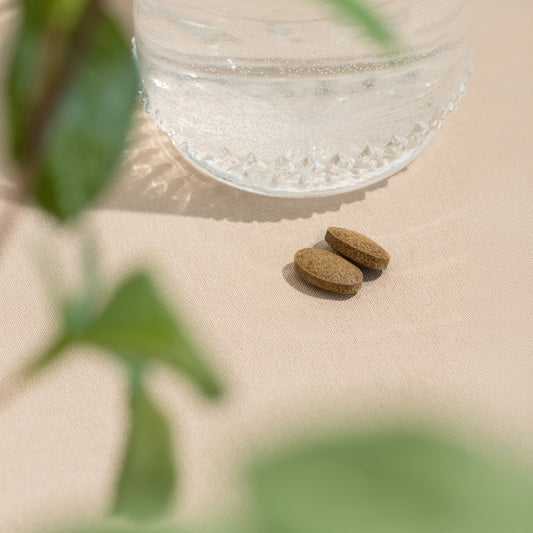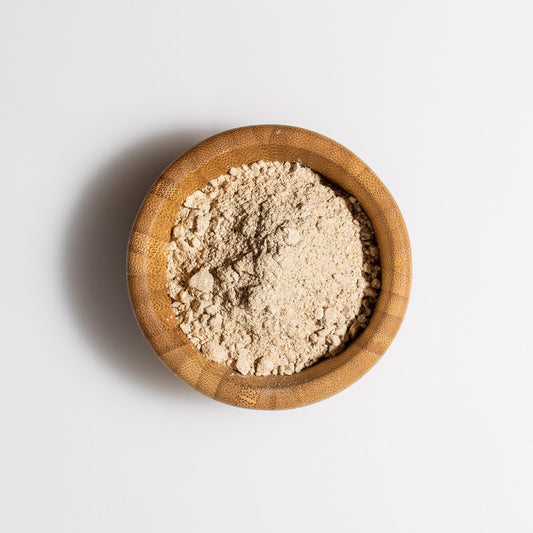Pitta-Type Elimination

Fennel, cilantro, and mint help balance pitta elimination.
Excess pitta in the channel of elimination tends to cause frequent or urgent stools that are soft, loose, liquid, or oily.1 Pitta type stools may fall apart upon being evacuated and may lack a solid form.
They are also often hot, causing a burning sensation when eliminated, and may have a strong (and frequently offensive) sour or acidic odor.1 Excess pitta can also cause an insatiable appetite and burning digestion.1
Balancing Pitta
To return to balance, we need to balance pitta's hot, sharp, light, and liquid qualities with foods, herbs, and experiences that are cooling, nutritive, heavy, and dense. In general, when pitta is aggravated, it is important to keep the mind and body cool and to avoid exercising at midday.
In addition, the following diet, lifestyle, and herbal recommendations will help to soothe pitta so that the channels of elimination can return to balance.
Diet
- Focus on eating a pitta-balancing diet.
- Emphasize energetically cooling foods, drinks, and spices—things like cilantro, coconut, peppermint tea, coriander, fennel, and mint.
- Include a moderate amount of cooling oils like ghee, sunflower oil, or coconut oil in your diet.
- Drink a moderate quantity of fluid, mainly at room temperature.
- Try taking a few tablespoons of aloe vera juice or gel 2–3 times per day to cool and soothe the channels of digestion and elimination.
Lifestyle
- Focus on establishing a pitta-balancing routine, as this can help to ground and cool pitta's sharp intensity.
- Observe a pitta-balancing exercise routine:
- Make sure that exercise is not overly intense; do it with relaxed effort instead. Enjoy activities like walking, hiking, light jogging, swimming, or cycling in the morning or evening (when it is coolest), and try to breathe through your nose the entire time.
- Practice pitta-balancing yoga or a series of gently paced and purposeful Moon Salutations each morning.
- Practice 5–10 minutes of Sheetali Pranayama every day on an empty stomach. A few minutes of Alternate Nostril Breathing make a wonderful complement to this practice.
Herbs
Additional Resources
Of course, an Ayurvedic practitioner can offer a more personalized perspective on the appropriate therapies for your unique situation. That said, if you are still hungry for more of the Ayurvedic perspective on digestion and elimination, you may find some of these resources helpful:
-
The Importance of Healthy Digestion
Symptoms in the channels of elimination are often the result of broader imbalances with agni (the metabolic fire). As an introduction to the critically important Ayurvedic concept of agni, this resource explores agni's role in maintaining health and vitality throughout the body, and offers practical tools for kindling the sacred fire within.
-
The Importance of Agni
This article explores the specific functions of agni, as well as the signs and symptoms of both healthy and impaired agni.
-
The Four Varieties of Agni
This resource compares balanced agni to the different types of imbalances that can disrupt it, and offers appropriate therapies for each type of imbalance.
-
Ama: the Antithesis of Agni
This piece introduces the toxic, undigested material called ama, whose qualities directly oppose those of agni. Ama in the body can either be the cause or the result of impaired agni—and in either case, threatens our health.
-
Ayurvedic Guide to Healthy Elimination
This is a more comprehensive look at healthy elimination through the lens of Ayurveda; it highlights the importance of healthy elimination and offers some general tips for supporting proper elimination.
More for You
Pitta-Balancing Foods
Pitta is oily, sharp, hot, light, spreading, and liquid, so eating foods that neutralize these qualities—foods that are dry, mild, cooling, grounding, stabilizing, and dense—serve to balance excess pitta.
Pitta Balancing Daily Routine
Adopting a daily routine is a very purposeful and enduring act of self-love. Each day, our routines provide us with a tangible opportunity to prioritize our own health and wellbeing, regardless of what else might be going on in our lives. Read on for specific practices for pitta-predominant individuals.
References
1 Lad, Vasant. Textbook of Ayurveda, Volume II: A Complete Guide to Clinical Assessment. Albuquerque: The Ayurvedic Press, 2006. Print. 105-107, 278.









